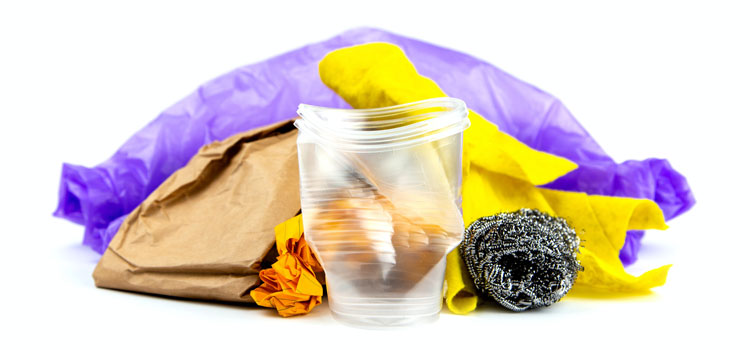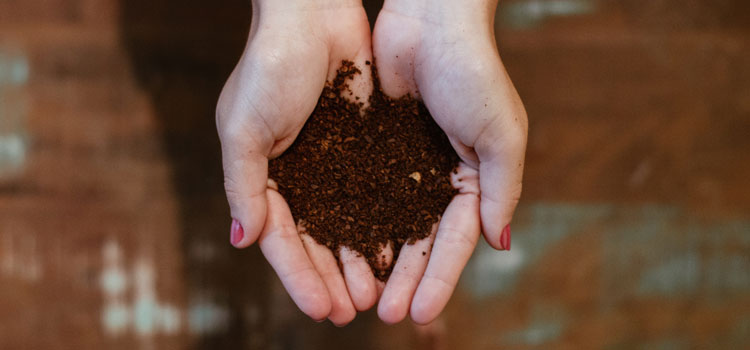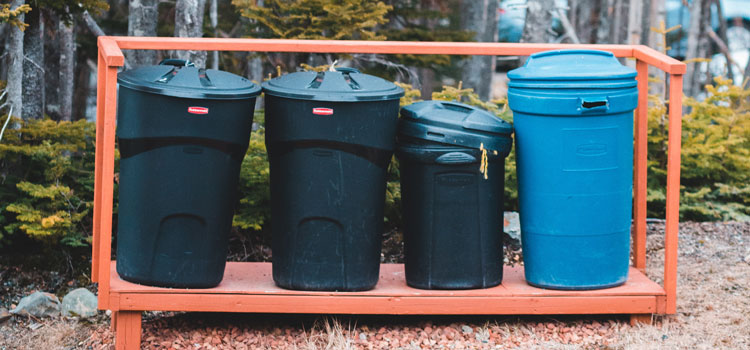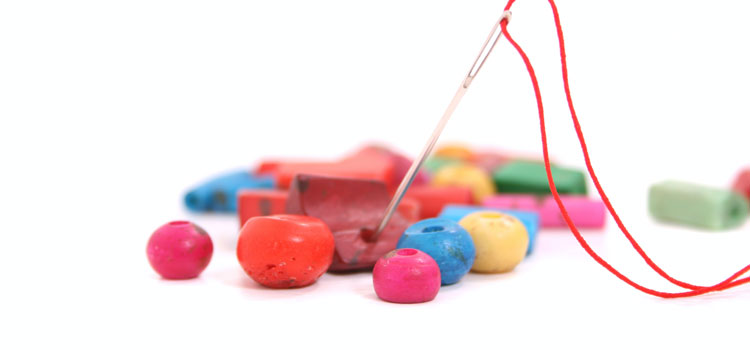You may have heard from a fabulous frog that, “it’s not easy being green,” but the truth is that approaching sustainability at camp can be pretty simple. There is an incredible surge of interest in building a greener, more sustainable world, and camps should take advantage of this. We’ve already posted about 8 Simple Ways to Make Your Summer Camp More Sustainable, but the more we thought about it, the more sustainability activities for summer camps we came up with.
Here are eight more eco-friendly ideas for summer camp that can also be done at home. We hope that they empower you and your campers to know that you’re making a powerful difference together!
1. Try the Food Waste Challenge

The statistics on food waste are staggering. Did you know that 40% of the food in the United States is never eaten? Globally, 30% of food is wasted. In fact, if food waste were a country, it would be the third-largest emitter of greenhouse gases globally—following up China and the United States, according to the World Resources Institute.
What that means isn’t just that your strawberries got moldy and had to go to waste. So too did all the energy and water it took to grow, harvest, package, ship it, and finally get it home. And when they do get in the landfill, they rot anaerobically in the air-proof cells of landfills which produce methane, a greenhouse gas that is many times more potent than carbon.
(It’s worth noting here that the onus isn’t entirely on the end consumer. The food waste problem extends from rotting during shipment to even the fields where food is grown, and sometimes left to rot. The people in each stage of the cycle have their part to play.)
Project Drawdown ranks reducing food waste as one of the top solutions for reducing our impact on the planet. It follows that if we can band together to tackle this massive emissions problem, we can make a huge step in the right direction.
So how can you reduce food waste at summer camp? Try the Food Waste Challenge on for size—you might be surprised at how this easy game encourages kids to really buckle down on food waste. They may think that a few extra crusts or green beans on their plates can’t be much, so this activity provides a concrete visualization on what food waste at our tables look like.
- Step 1: Get a bucket or a large tub. If you can get a clear one it’ll be even easier to measure your progress.
- Step 2: Mark measurements on the side of your tub at even increments, five to eight levels works great.
- Step 3: Put the tub out during meal times. At the end of the meal, everyone scrapes whatever is left on their plate into the bucket or tub. You might be surprised by how full it gets!
- Step 4: Here’s the challenge: next meal time, can you put less food into the tub? How about by the end of the week, can you get it almost empty?
- Step 5: Review your progress with everyone and congratulate them on making such a big difference. When everyone is more mindful about what they are throwing away, we can finally visualize our community impact.
You could even make this a friendly competition between sections of your camp, with separate tubs, to get them to try to out-do one another in the quest to take only what they can eat.
2. Go After Food Packaging for Sustainability:

So you’ve tackled organic food waste in your camp kitchens, but what about the packaging the food comes in? Take an inventory of what you’re ordering and see if there are any suppliers that sell bulk items in paper instead of plastic, or even just choose a food brand that uses less packaging than their competitors. Spending even an hour thinking about how your food arrives, and choices you could make to reduce waste, can have a huge impact.
3. Get the Dirt on Composting

Composting is a great way to turn the scraps you really can’t eat (potato peels, vegetable trimmings) into healthy soil to grow new things! If you’ve wondered how to make summer camp more sustainable, this is a great piece to add to the puzzle.
Invest in a composting system for your summer camp. It could be as simple as getting a few locking bins—the SoilSaver is the one that the sustainability-focused City of Boulder recommends—or making a compost pile with walls of chicken wire or wood.
Not only can it help you grow wonderful things, it’s fun to watch. There’s an entire ecosystem in a compost pile that kids can learn about. From snails and bacteria to worms and “shredders” like centipedes, all sorts of critters work together to turn organic matter into rich soil.
Plus, this would go great in a pollinator garden, which is the next suggestion.
4. Save the Pollinators

There has been a lot of buzz lately about saving the bees. It’s no wonder, because 70 of the top 100 human food crops are pollinated by bees. That adds up: about 90% of the world’s nutrition is thanks to bee pollination!
But this goes so much farther than just honeybees. In our home state of Colorado alone, there are over 950 bee species! Many of these are solitary bees, which don’t live in hives like honeybees. This means they travel from flower to flower, getting the food and resources they need, and returning to their nests. Female bees lay a series of eggs in tunnels that will hatch the following season. Researching your local pollinators is a great learning opportunity for campers.
To help out the bees, of course take a look at any landscaping chemicals you’re using. If you can cut them out, the bees will thank you!
Then, get campers involved. Both bee gardens and bee hotels are great sustainable activities for kids.
Plant a Bee Garden: Your compost from the previous section won’t just help your plants grow better, it will help them use less water too by retaining moisture!
- Start with native plant varieties as much as possible, and even think about including a source of fresh, clean water.
- A shallow tray with stones makes a great landing pad and pond for our pollinating friends. Check out these tips and tricks from the Honey Bee Conservancy.
Build a Pollinator Hotel: One of the reasons so many solitary bees are struggling right now is the disappearance of their habitat. Dead grass, twigs, logs, and patches of bare dirt, so handily removed for landscaping reasons, are some of the most luxe accommodations a bee could ask for.
- National Geographic has three great bee hotel models to help you get your campers engineering your very own bee bunks.
- If you can build both pollinator hotels and a bee garden, you’ll have built a bee bed-and-breakfast! How many different types of bee can you spot? What fruits and herbs can you enjoy as the product of their labor?
While we’re here, let’s talk about wasps. They might crash your barbecues, and they’re not as cute as our fuzzy bee friends. But they also provide a very important role in the ecosystem, and can help the bees: they’re extremely efficient at controlling insect pests. As an added bonus, they can do a bit of pollination themselves. Just like the bees, their populations are declining and they need our support.
Spending even an hour thinking about how your food arrives, and choices you could make to reduce waste, can have a huge impact.

5. Write letters in support of the environment
It’s wonderful to make personal changes, but it’s also important to be aware of and support legislation that spreads the impact from a few dedicated individuals to a broader audience.
Look for local bills in your area. Are there bans on plastic? Are they in the works? Or are there plastic preemptions that prevent plastic bans from being passed? Expose campers to all of these laws, and the governmental processes that allow bills to pass and preemptions to be overturned.
Then, write letters to your local representatives as a group to support the measures you approve of, or to voice your concern about the ones you don’t.
You can also write letters to your favorite brands encouraging them to start making more sustainable packaging choices.
6. Do the One Week of Waste Challenge

Curious to see what your entire impact as a camp is? Time to get everyone involved for a group project.
- Provide bins for campers to sort their waste: all organic/food waste goes in one place, recyclables in another, and assorted landfill in another.
- Keep the food waste/anything that rots out of the recyclables and trash bins. This will make your experiment a lot friendlier to the nose.
- At the end, lay it all out on the ground and sort it. A less windy day outside works great, as does a tarp indoors.
- Mobilize your campers to do the counting and take a tally. How many candy bar wrappers are there? How many soda bottles? What’s recyclable and what isn’t? While you’re at it, give a weigh too. How much waste would you make per summer, by weight, if this was the same every week?
- Look at everything you’ve laid out. Encourage campers to think about what they could use less of, and what they can’t do without.
This challenge is a bit of work, but remember, it doesn’t have to be done perfectly for you to get a rough idea of what you throw away each week. After all, every piece of our waste has to go somewhere. The biggest hurdle is getting your bins set up around camp.
You can repeat the experiment in several weeks to see if you and your camp team were able to reduce what you used. Even if not, the biggest point of this exercise is to confront things that we often don’t even see. It’s all too easy to throw away a power bar wrapper without ever thinking what it took to make and what it will take to dispose of it. In fact, we throw things away without thinking at all!
That’s why every time something goes in a bin it’s an opportunity to realize the action and so counter “throwaway” culture. Just like in the Food Waste Challenge, this is an opportunity to take the abstract and make it visual.
7. Host a Mending Workshop

Camp can be rough on clothes. Buttons fall off, and there are more holes in the knees than you can shake a stick at. This makes it the perfect time to empower campers to make small, easy repairs to their clothing.
You could cover threading a needle, knotting thread, sewing on buttons, and even patching elbows and knees. These are skills that will last a lifetime.
Not only can you repair much-loved clothing items, you’ll also be making a fabulous impact. The clothing/textile industry produces more harmful emissions than the global aviation and shipping industries combined. Instilling the value and know-how of caring for clothing isn’t just good for you, it’s also good for the planet.
8. Remember how Beautiful the World is

The climate crisis can be overwhelming. That’s why it is absolutely essential to remember that hope isn’t lost. Far from it. When we get outside, we can be inspired by the nature we see and remember that it’s worth fighting for.
Lead your campers out on a walk to some of the most beautiful areas of your camp and celebrate how you’ve been able to enjoy them for generations. And with the rest of the work you’re doing around camp, how you’ll be able to enjoy them for many more.
Building a Culture of Sustainability at Camp
Taking steps toward a greener future doesn’t require a complete overhaul—just thoughtful, consistent action. These sustainability activities for summer camps aren’t just about reducing waste or cutting emissions. They’re about building a culture of mindfulness, curiosity, and community responsibility. Whether you’re composting kitchen scraps, giving bees a new home, or teaching kids how to mend a ripped shirt, you’re empowering campers with lifelong skills and values that ripple far beyond the summer.
Remember: every small shift counts. When campers see the direct impact of their efforts—less food in the waste bin, more pollinators in the garden, fewer candy wrappers on the ground—they begin to believe in their ability to make a difference. That belief is powerful. It’s what creates environmental stewards, thoughtful leaders, and advocates for change.
So pick one or two of these ideas to start with. Talk with your team. Get your campers involved. The path to a greener camp doesn’t have to be perfect—it just has to begin. And with these sustainability activities for summer camps, you’re well on your way.
